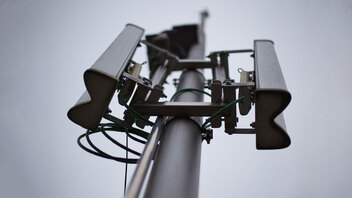How dangerous are radiofrequency systems?

Robert Webber (BBC)
Radiofrequency systems have been an integral part of the broadcast industry since its inception. In the early days those wireless systems were limited to the broadcasting of content. However, as technology has advanced in the 100 or so years since, wireless technologies have also become an increasingly important part of content creation.
In the late 1980s, as mobile telephones began to achieve wide public acceptance, public concerns grew about risks to human health from radiofrequency transmissions. Despite many studies over the years showing little correlation between radiofrequency transmissions and adverse impacts on health, these concerns have shown little sign of abating. For example, during the COVID-19 pandemic, conspiracy theories suggested an (unfounded) link between 5G mobile deployment and the virus.
Since the early 1990s, the International Commission on Non-Ionizing Radiation Protection (ICNIRP) has provided guidelines on levels of radiofrequency radiation deemed not to cause harm to members of the public (Public limits), and for those working with RF systems with knowledge of how to manage the risk (Occupational limits). The ICNIRP guidelines, and other local limits imposed by regulators, define levels that are judged by health professionals to minimize harm to human health. As these exposure levels are not based on any specific technology, it can be difficult for broadcasters or network operators to know how they apply to the systems they operate.
Two technical reports
As part of efforts to address these limitations, the EBU’s Electromagnetic Interference and Compatibility (S-EIC) project group, which is part of the Spectrum strategic programme, provides advice and guidance to Members on issues related to human health and radiofrequency. For example, the S-EIC team recently produced two technical reports on radiofrequency limits and hazard assessment.
The first of these documents is EBU Technical Report 066 (TR066) Review of the ICNIRP 2020 Guidelines for Limiting Exposure to Non-Ionizing Radiation, which provides an overview of how guidance has changed since the first version of the ICNIRP guidance, issued in 1998, and the subsequent ICNIRP 2010 and ICNIRP 2020 versions. This report also explains the relationship between ICNIRP 2020 and the European EMF (electromagnetic fields) directive.
The second new publication is EBU Technical Report 067 (TR067) RF Radiation Hazards Arising From Bonded Cellular ENG Equipment. This report was produced in response to a specific question raised by an EBU Member. The report also explains the practical difficulties inherent in making measurements of radiofrequency radiation from cellular equipment. For example, the conventional way of measuring emissions from small devices is to place them in a screened test chamber; however, it is not possible to test cellular equipment in this manner as it will not transmit without first receiving a signal from a base station.
In addition to these technical reports, the EBU S-EIC group makes a significant contribution at international regulatory level. For example, Karina Beeke (Cellnex), a member of S-EIC, is the current chair of the ITU-R WP6A Rapporteur Group on RF
Hazard issues. She is leading the revision of Report ITU-R BS.1698 Evaluating fields from terrestrial broadcasting transmitting systems operating in any frequency band for assessing exposure to non-ionizing radiation.
Employees of EBU Members who are interested in the issues highlighted in this article are invited to join the S-EIC group to help ensure continued compliance with regulations, and to support the protection of people and services vital for broadcasting.
This article was first published in issue 55 of tech-i magazine.
Photo: Jonas Stolle on Unsplash
This article has been archived for your research. The original version from EBU Technology & Innovation can be found here.


